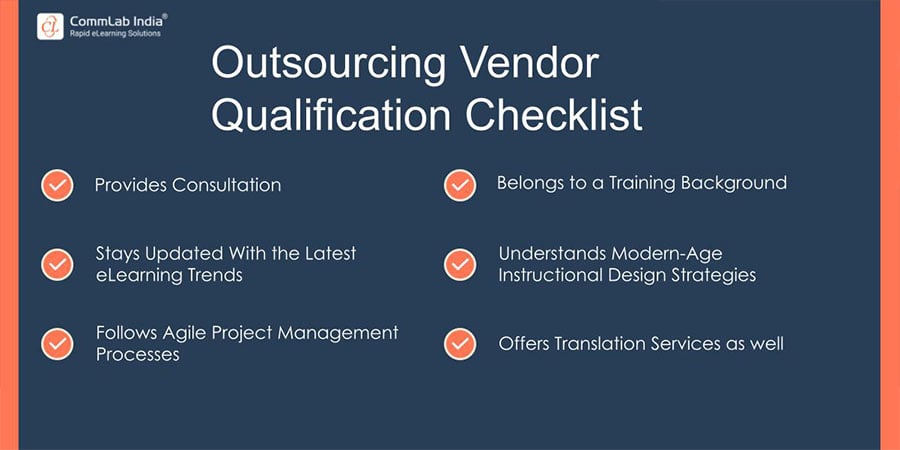The Need for Speed: Why Rapid eLearning is Essential for Modern Learning

In today’s fast-paced world, traditional methods of learning and training are becoming increasingly outdated. With the rise of technology, learners expect a faster, more efficient, and more engaging learning experience. This is where rapid eLearning comes in. Rapid eLearning is a method of creating and delivering eLearning content quickly and efficiently. It allows for the creation of training modules and courses in a fraction of the time it takes for traditional methods. It is a highly effective way to deliver training to employees and anyone else who needs to learn quickly.
Are you Stuck With Traditional Learning Methods? Opt for Rapid eLearning ASAP!
Here are a few benefits to help you make up your mind:
- Faster learning
- Cost-effective
- Flexibility
- Enhanced Engagement and Interactivity
- Scalability
Why Rapid eLearning is Essential for Modern Learning
1. Faster Learning
One of the most significant benefits of rapid eLearning is that it allows learners to acquire new knowledge and skills quickly. Conventional methods of learning can take weeks or even months to complete. With rapid eLearning, learners can complete courses in a matter of hours or days. Check out the video below to understand the impact of various rapid eLearning accelerators.
This is particularly beneficial in a global business setting, where time is money. Rapid eLearning enables employees to acquire new skills and knowledge quickly, allowing them to become more productive and efficient in their roles. This, in turn, can lead to improved performance and increased revenue for the business.
2. Cost-Effective
Another significant benefit of rapid eLearning is its cost-effectiveness. Traditional methods of learning, such as classroom training, can be expensive, with costs associated with venue hire, travel, and accommodation. Rapid eLearning eliminates these costs, as it can be delivered online, eliminating the need for physical venues and associated costs.
→ Download eBook Now- The State of Learning: 2023 and Beyond
Furthermore, rapid eLearning allows for the creation of training modules and courses in-house, reducing the need for expensive third-party providers to design conventional eLearning courses. This can significantly reduce the cost of training and make it more accessible to businesses of all sizes. Even if you are incapable of doing everything in-house, you always have the option to outsource and yet save a lot of your money as rapid eLearning services are relatively cheaper than traditional eLearning design and development.

3. Flexibility
Rapid eLearning is highly flexible and can be tailored to meet the needs of individual learners. Traditional classroom training often tends to have a one-size-fits-all approach, which may not be suitable for all learners. Rapid eLearning allows learners to learn at their own pace, giving them the flexibility to complete courses when it suits them.
This is particularly beneficial for businesses with a geographically dispersed workforce, as it allows employees to complete the training without the need for travel. Rapid eLearning courses are designed with a responsive design in mind, to ensure learners can access the training modules on their mobile devices seamlessly. It also allows for the delivery of training to remote workers, making it more accessible to all employees.
4. Enhanced Engagement and Interactivity
Rapid eLearning is highly engaging and interactive, making it more enjoyable and effective for learners. Traditional methods of training can be dull and uninspiring, leading to disengaged learners. Rapid eLearning, on the other hand, can include a variety of interactive elements, such as videos, quizzes, and games, making the learning experience more enjoyable and engaging.

This can lead to improved knowledge retention, as learners are more likely to remember information that is presented in an engaging and interactive way. It can also lead to increased motivation, as learners are more likely to be motivated to complete courses that are enjoyable and engaging.
5. Scalability
Rapid eLearning is highly scalable, making it suitable for businesses of all sizes. Conventional training can be challenging to scale, particularly for businesses with a large workforce. Rapid eLearning, on the other hand, can be delivered to large numbers of learners simultaneously, making it a highly scalable solution.
This is particularly beneficial for businesses with a rapidly growing workforce, as it allows for the delivery of training to new employees quickly and efficiently. It also allows for the delivery of training to multiple departments or teams simultaneously, making it more efficient and cost-effective. This makes the employee onboarding processes quite hassle-free for organizations of any size.
Wrapping Up!
Rapid eLearning has become an essential tool for businesses and educational institutions alike. Its ability to deliver training quickly, cost-effectively, and with flexibility has made it a popular choice for businesses looking to upskill their employees or deliver training to a geographically dispersed workforce. However, it is important to note that rapid eLearning is not a one-size-fits-all solution. The state of learning is changing every day and keeping up with it is more of a need than a desire, and here’s a free eBook to make it a reality and stay ahead of the curve, check it out!





